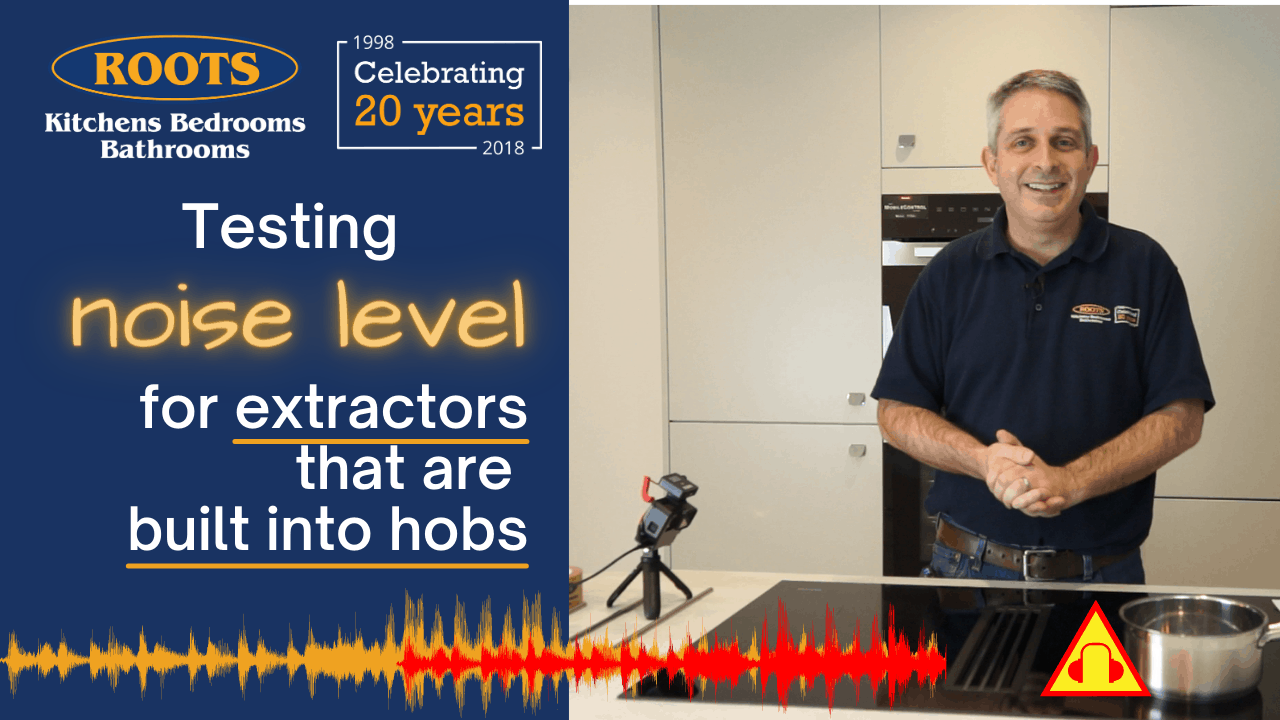At Roots we like to investigate products we sell as thoroughly as we can. Steve’s shared some of those investigations as youtube videos and testing if extractors that are built into hobs are effective at removing humidity has been very popular with over 120,000 views. A lot of the comments highlighted how noisy the extractor in that video was. Steve replied several times that youtube videos are not useful for judging noise (it depends on the microphones and sound is easy to manipulate when editing) but with so many comments it was time to do a new video focusing on how, as professionals, we make real and useful comparisons of noise levels when specifying extractors. You can see that video here
A viewer posted a question to the new video,“What kind of extractors is best for indian cooking which means 3 meals a day” so as well as answer that on youtube let’s answer it here as well.
Short answer: Industry wisdom is that an extractor should be capable of removing or filtering all the air in the room 10 times in an hour.
Long answer:
The number of meals a day shouldn’t make a difference in calculations like this as we want to remove smells & humidity reasonably quickly when cooking. Likewise Indian cooking can be substituted for any cooking, be that boiling potatoes or frying fish. All forms of cooking generate smells, humidity and grease that we’d like to capture rather than allow to fill the room.
Air mixes constantly, so you have to change all of the air in the room more than once.
Remember if you remove air you need to replace it, so allow for doors into the room to be open, or windows ajar. If a room is 2.4m high x 4m long x 5m wide, it’s (2.4x4x5=) 48m3 of volume. 10 times that is 480m3 so ideally plan for an extractor with a max setting of at least 480m3/hr extraction rate.
This formula doesn’t work so well for open plan spaces as it’s clear no extractor can reach 10 times the room, so rule of thumb it to prefer [the highest extraction rate] with [the least noise] at [a price point that works in your whole room plans]. Generally, you pay more for power & quietness.
As for whether it should be built into the hob or overhead, that’s a function of the needs of the room design.
I like to use wall mounted extractors where the hob is against a wall, and these venting/downdraught extractors in islands.
I’ll design in ceiling mount extractors where a) the ceiling is suitable and b) future access to change filters is acceptable [I worry over details like how will customers remove the filters for cleaning if they’re too high]. Of course, all those design choices have other factors specific to a room (how it looks, how much it costs, how it can be fitted).

